I'm currently writing an Excel wrapper, and part of it is this function returning all data from a certain offset to the last row of that column. For example, if I want everything from the 3rd row up till including the last line. This should work for your problem as well. Note where the constant is retrieved from and how all methods are stacked together to get the data and the last row.
Key functions:
def get_column_after(self, column, offset):
for item in self.ws.Range("{0}{1}:{0}{2}".format(column, offset, self.get_last_row_from_column(column))).Value:
print(item[0])
def get_last_row_from_column(self, column):
return self.ws.Range("{0}{1}".format(column, self.ws.Rows.Count)).End(win32com.client.constants.xlUp).Row
NOTE: This code is a work in progress and at the moment only supports one worksheet, one workbook per instance. I'm sure you can figure out a way to get this to work in your project though.
import string
import win32com.client
SOURCE_PATH = "C:\ExternData\somefile.xlsx"
WORKSHEET_NAME = "WS_1"
class ExcelInstance():
def __init__(self, wb=None):
self.source_path = SOURCE_PATH
try:
self.app = win32com.client.gencache.EnsureDispatch('Excel.Application')
except:
print("Application could not be opened.")
return
try:
self.open_workbook()
except:
print("Workbook could not be opened.")
return
try:
self.ws = self.wb.Worksheets(WORKSHEET_NAME)
except:
print("Worksheet not found.")
return
self.app.Visible = True
self.app.WindowState = win32com.client.constants.xlMaximized
def open_workbook(self):
"""
If it doesn't open one way, try another.
"""
try:
self.wb = self.app.Workbooks(self.source_path)
except Exception as e:
try:
self.wb = self.app.Workbooks.Open(self.source_path)
except Exception as e:
print(e)
self.wb = None
def get_column_after(self, column, offset):
for item in self.ws.Range("{0}{1}:{0}{2}".format(column, offset, self.get_last_row_from_column(column))).Value:
print(item[0])
def get_last_row_from_column(self, column):
return self.ws.Range("{0}{1}".format(column, self.ws.Rows.Count)).End(win32com.client.constants.xlUp).Row
def main():
f = ExcelInstance()
f.get_column_after("A", 3)
if __name__ == "__main__":
main()
